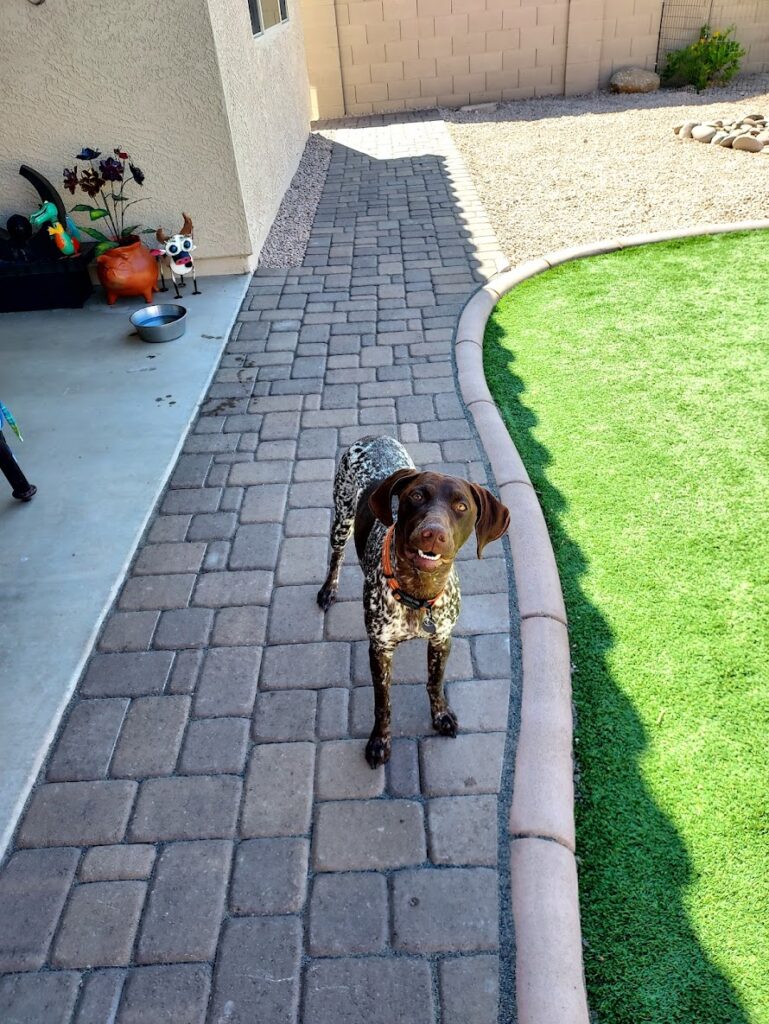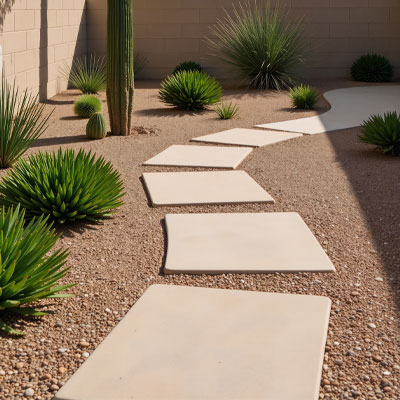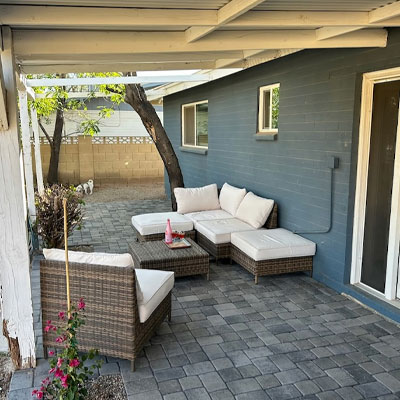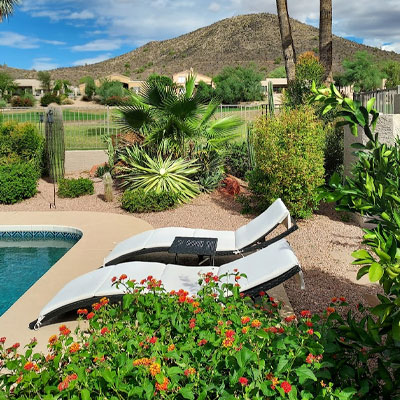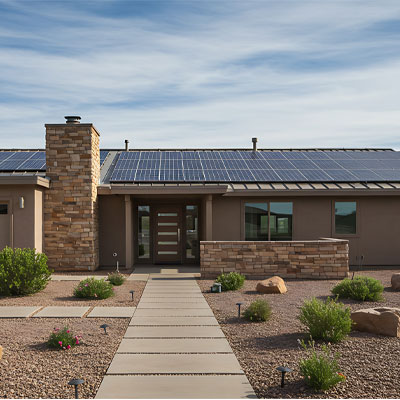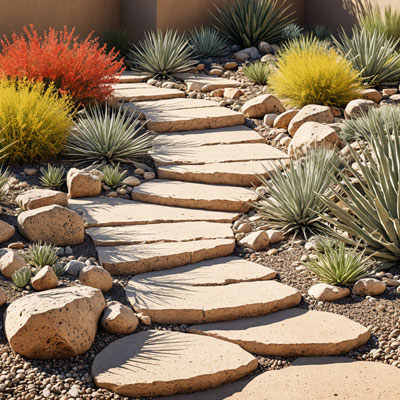Frequently Asked Questions
Which landscaping stone is more durable, granite or limestone, for pathways and patios?
Granite is more durable than limestone for pathways and patios. Its hardness and resistance to weathering make it an ideal choice for high-traffic outdoor areas, ensuring longevity and minimal maintenance over time.
What are the best stones for patios?
The best stones for patios include flagstone, slate, and bluestone, as they offer durability, aesthetic appeal, and resistance to weathering, making them ideal choices for enhancing outdoor spaces.
How to choose stones for pathways?
Choosing stones for pathways involves considering the stone's size, shape, texture, and color to complement your landscape. Opt for durable materials like flagstone or gravel that provide stability and enhance the aesthetic appeal of your outdoor space.
What features enhance patio durability?
The features that enhance patio durability include high-quality materials, proper drainage systems, and a solid base for installation. Utilizing durable stones or concrete, along with effective sealing, ensures longevity and resilience against weather elements.
Which stone is best for decorative hardscapes?
The best stones for decorative hardscapes include flagstone, slate, and natural granite, as they offer durability, aesthetic appeal, and versatility in design, enhancing the overall beauty of outdoor spaces.
How does climate affect stone selection?
Climate significantly influences stone selection for hardscape projects. For instance, freeze-thaw cycles may require more durable stones, while hotter climates may favor heat-resistant materials to prevent cracking and fading.
What maintenance is required for hardscapes?
The maintenance required for hardscapes includes regular cleaning to remove debris, occasional sealing to protect surfaces, and prompt repair of any damage to ensure longevity and aesthetics.
How to install granite pathways effectively?
Installing granite pathways effectively involves preparing a stable base with compacted gravel, laying a weed barrier, and evenly distributing decomposed granite while ensuring proper drainage for longevity and durability.
What are the benefits of limestone patios?
The benefits of limestone patios are numerous. They offer durability, natural beauty, and excellent heat resistance, making them ideal for outdoor spaces. Additionally, limestone is low-maintenance and can enhance the aesthetic appeal of any landscape design.
How to design a hardscape layout?
Designing a hardscape layout involves assessing your outdoor space, determining the purpose of the area, and selecting materials that complement your landscape. Consider flow, functionality, and aesthetics to create a cohesive design.
What colors are available for hardscape stones?
The available colors for hardscape stones include a variety of earthy tones such as gray, beige, brown, and red, along with vibrant options like blue and green to complement your outdoor space's aesthetic.
How to integrate plants with hardscapes?
Integrating plants with hardscapes involves strategically placing greenery alongside patios, walkways, and other features to create a harmonious outdoor space. Use native plants and planters to soften hard edges and enhance visual appeal.
What is the cost of granite installation?
The cost of granite installation varies based on factors such as area size, granite type, and project complexity. Generally, you can expect prices to range from $50 to $100 per square foot, including materials and labor.
How to prevent weeds in stone pathways?
Preventing weeds in stone pathways involves using a combination of techniques. Start by laying a weed barrier fabric before installing stones, and regularly apply mulch or gravel to suppress growth. Additionally, consider using herbicides or hand-pulling weeds as they appear.
What are common hardscape design mistakes?
Common hardscape design mistakes include poor drainage planning, inadequate material selection, neglecting scale and proportion, and insufficient integration with the surrounding landscape. These errors can lead to functionality issues and reduced aesthetic appeal.
How to create a cohesive outdoor space?
Creating a cohesive outdoor space involves selecting complementary materials, colors, and design elements that harmonize with your landscape. Incorporate consistent features like pathways, patios, and decorative accents to unify the overall aesthetic.
What tools are needed for hardscape installation?
The tools needed for hardscape installation include a shovel, level, tamper, rubber mallet, and a saw for cutting materials. Additionally, a compactor, measuring tape, and safety gear are essential for ensuring precision and safety during the process.
How to ensure proper drainage in patios?
Ensuring proper drainage in patios is essential for preventing water accumulation. This can be achieved by sloping the patio away from structures, incorporating drainage channels or weep holes, and using permeable materials to facilitate water flow.
What are the trends in hardscape design?
The trends in hardscape design include the use of sustainable materials, integrated lighting, and multifunctional spaces that blend aesthetics with functionality, enhancing outdoor living areas while promoting environmental responsibility.
How to choose between concrete and stone?
Choosing between concrete and stone involves considering factors like durability, aesthetics, and cost. Concrete offers a versatile and cost-effective solution, while stone provides a natural, timeless look but may require a higher investment.
What are the advantages of flagstone paths?
The advantages of flagstone paths include their natural beauty, durability, and versatility. They provide a unique aesthetic appeal, can withstand various weather conditions, and can be customized to fit any outdoor space, enhancing your landscape's overall design.
How to enhance outdoor aesthetics with hardscapes?
Enhancing outdoor aesthetics with hardscapes involves integrating durable features like patios, walkways, and decorative elements that complement your landscape. These installations provide structure and visual appeal, transforming outdoor spaces into inviting areas for relaxation and entertainment.
What is the lifespan of different stones?
The lifespan of different stones varies significantly based on their type and usage. For instance, granite can last over a century, while softer stones like limestone may last 50 years or more, depending on environmental factors and maintenance.
How to repair damaged hardscape features?
Repairing damaged hardscape features involves assessing the extent of the damage, cleaning the area, and replacing or repairing the affected materials, such as pavers or stones, to restore functionality and aesthetics.
What are eco-friendly options for hardscaping?
Eco-friendly options for hardscaping include permeable pavers, recycled materials, and native stone installations. These choices promote sustainable drainage, reduce environmental impact, and enhance the natural beauty of your outdoor space while ensuring durability and longevity.
How to incorporate lighting in hardscapes?
Incorporating lighting in hardscapes enhances both functionality and aesthetics. Consider using pathway lights, recessed lighting in steps, and accent lights on decorative features to create a welcoming atmosphere while ensuring safety during nighttime.
What are the best practices for stone sealing?
The best practices for stone sealing include thoroughly cleaning the surface, allowing it to dry completely, and applying a high-quality sealant evenly. Regular maintenance and reapplication every few years will ensure lasting protection and enhance the stone's appearance.
How to create a budget for hardscaping?
Creating a budget for hardscaping involves assessing your outdoor space, determining the materials and features you desire, and obtaining quotes from contractors. Factor in installation costs, maintenance, and potential permits to ensure a comprehensive budget.
What are the benefits of professional installation?
The benefits of professional installation include expert craftsmanship, ensuring durability and longevity of hardscape features, and adherence to local regulations. This results in a polished finish and minimizes the risk of costly repairs down the line.
How to select stones for a modern look?
Selecting stones for a modern look involves choosing sleek, minimalist designs with clean lines and neutral colors. Opt for materials like polished granite or smooth river stones to create a contemporary aesthetic that complements your outdoor space.
